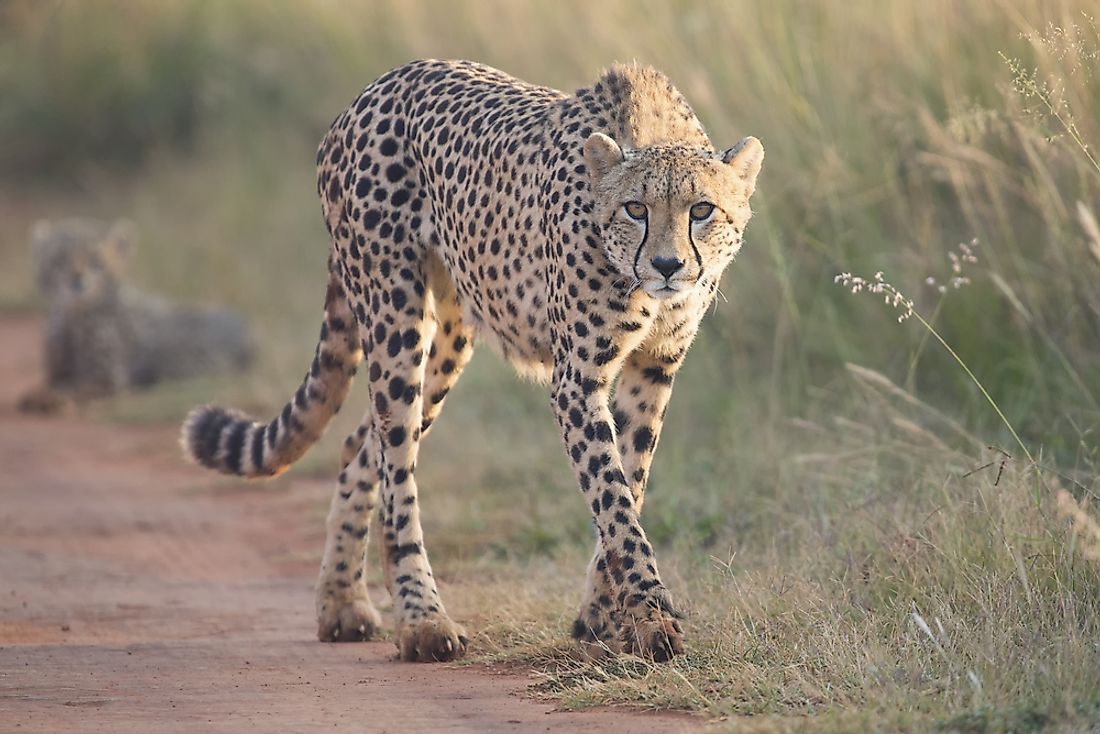Where Do Cheetahs Live?

The cheetah, Acinonyx jubatus, lives predominantly in Eastern Africa, Southern Africa, and parts of Iran. “Cheetah” is a vernacular name derived from a Hindi word meaning bright. This animal’s close relatives are the cougar and the jaguarundi; the three specifies form the Puma lineage. A German naturalist, Johann Christian Daniel von Schreber first described this animal in 1775. Cheetahs have slender bodies, spotted coats, round heads, dark tear-like streaks on the face, long thin legs, deep chests, and long spotted tails. The body of a cheetah is specialized for speeds of up to 70 miles per hour.
Behavior
These animals hunt during the day and rest in grassy areas at night. Males and female rarely interact during normal circumstances unless during mating season. The male cheetah is gregarious; it forms coalitions to defend territories and to gain maximum access to the females. The female remains in solitary or with young offspring. Male cheetahs mark their territory by urine, feces or marking by claw. The cheetah has a wide variety of vocalization but most distinct is a characteristic purr. In greeting, the cheetahs sniff each other's genitals and oral areas and lick and rub each other's faces. Being carnivores, cheetahs hunt through sight using its speed as an advantage to catch prey. The cheetah trips its prey and uses its dewclaws to knock the prey off balance. After a chase, a cheetah normally rests for as long as 55 minutes. The cheetah’s adaptation to speed is a light, thin body which makes it the fastest animal on land. There is a difference in preference of prey between males and females in this area. Males opt for open savannah because they prefer large prey since they hunt in coalitions, while females who prefer small prey such as impala mostly live around woodlands. Generally, the cheetah prefers open but bushy areas which provide them some cover to stalk their prey and minimizes encounters with larger carnivores.
Distribution and Habitat
Africa
The cheetah lives in dry and shrub forests and savannah in Africa with the largest populations occurring in South-Western Angola, Botswana, Malawi, South-Western Mozambique, Namibia, Northern Mozambique, Northern South Africa, Southern Zambia, and Zimbabwe. A diminishing population occurs in the horn of African countries like Kenya, South Sudan, Ethiopia, Tanzania, and Uganda. The lowest population is in the Sahara in Northern and Western Africa.
Asia
Previously, the cheetah occurred widely in Asia as from the Mediterranean and the Arabian Peninsula in the west, India in the east, and the Caspian and Aral Seas in the North. Unfortunately, the population has diminished from the majority of its historic range and now occur in Iran and few areas in Afghanistan, India, and Turkmenistan. The animal became extinct in Europe. Whilst they do not like montane ecosystems, they prefer elevated regions.
Threats and Conservation Measures
This animal is an endangered species. Encroachment by humans for industrial and agricultural expansion has widely affected its habitat. In addition, game hunters who view the animals as predators kill them so do farmers who want to protect their livestock from cheetah attacks. There is notable interference of the animals’ natural activities in areas where human development extends to the wild, further, vehicles that pass through their habitat run them over. Many countries in Asia and Africa have invested in programs aimed at conservation of the cheetah. The main goal of the conservation programs is to manage lands which in turn will achieve a reduced scattered population of the animals.











